An interdisciplinary research team has investigated whether there are quantitative differences that can be used to identify individual potters who make traditional, fixed-shape vessels that have been made in the same way for generations. Consequently, they discovered that there are clear variations between individuals in the formation process and hand movements used.
Members of the research team included Dr. Enora Gandon (Institute of Archaeology, University College London), Professor NONAKA Tetsushi (Graduate School of Human Development and Environment, Kobe University), and Professor Emeritus John A. Endler (Deakin University).
Up until now, the transmission of cultural traditions has been viewed in terms of 'imitation' and 'transmitted information'. However, the results quantitatively show that other factors beyond imitation, such as the individual's corresponding ability and exploratory learning process, play a role. In addition, it is hoped that these results will serve as a basis for determining whether unattributed archaeological artefacts were produced by one or multiple artisans.
These research results were published in the scientific journal 'PloS ONE' as two separate papers on September 22 and October 1 respectively.
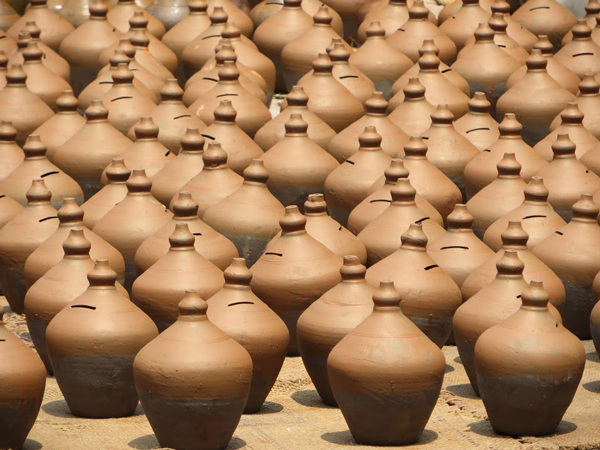
Similarly shaped 'Money-Bank' pottery vessels from India and Nepal that were one of the subjects of this study. ©Enora Gandon
Main points
- There were quantitative differences distinct to individual potters, even when standard traditionally-shaped vessels were produced.
- There was greater diversity between potters during the formation process compared with the finished product.
- Multiple hand movement patterns that could be used to distinguish individual craftsmen were found.
Research Methodology and Findings
Humans pass down various skills to their communities and the next generation. One of these skills that has been transmitted since ancient times is pottery. This study investigated how the individuality of each craftsman stands out during the formation process of traditional pottery pieces, in particular the standardized, unsigned pottery produced for the mass-market.
First of all, the research team recorded video footage of potters making traditionally shaped pottery in the workshops of two different communities located in the Indian state of Uttar Pradesh (a Hindu community which uses a hand-operated stick-wheel, and a Muslim community which uses a foot-operated kick-wheel). The researchers performed an elliptical Fourier analysis on the recorded images in order to investigate the shape formation process during pottery throwing (Figure 1).
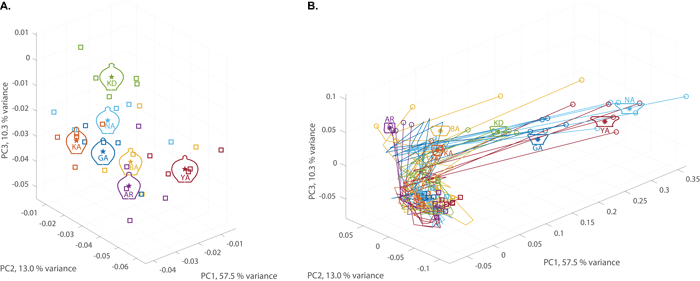
Figure 1: Development of vessels thrown by all seven potters represented as trajectories through shape space consisting of the elliptic Fourier descriptor's principal component.
A. Final form B. Changes during shape formation.
Figure A focusses on the final shapes, the development of which is shown in B. Initials denote individual potters and plots of the same color indicate pots thrown by the same individual during the experiment.
The results revealed that:
1. There were quantitatively distinguishable differences between the pottery produced by individual craftsmen, even among standard traditionally-shaped vessels produced for the consumer market.
2. There was greater variation between potters during the formation process than in the finished form.
Next, the researchers recorded video footage of traditional pottery shapes being made by craftsmen in a workshop in Bhaktapur, Nepal. The research team used this footage to analyze the hand movement patterns and transitions during the vessel formation processes, comparing them with those from the Indian communities.
Out of the 31 identified patterns of hand movements; similarities could be seen between different communities in approximately half of this number (cross-cultural), ten were particular to the Nepalese community (cultural), and five were identified as unique to the particular individual. The remaining movements were only observed once in one individual.
Cross Recurrence Quantification Analysis (CRQA) is a method used to quantify the dynamics of shared activity between two time series. CRQA was conducted on hand position sequences from different trials resulting in plots showing the temporal relationship between all possible combinations of hand positions in one trial with hand positions in another trial during the fashioning. These analyses revealed that there were hand position sequences that were unique to individual craftsmen (Figure 3).
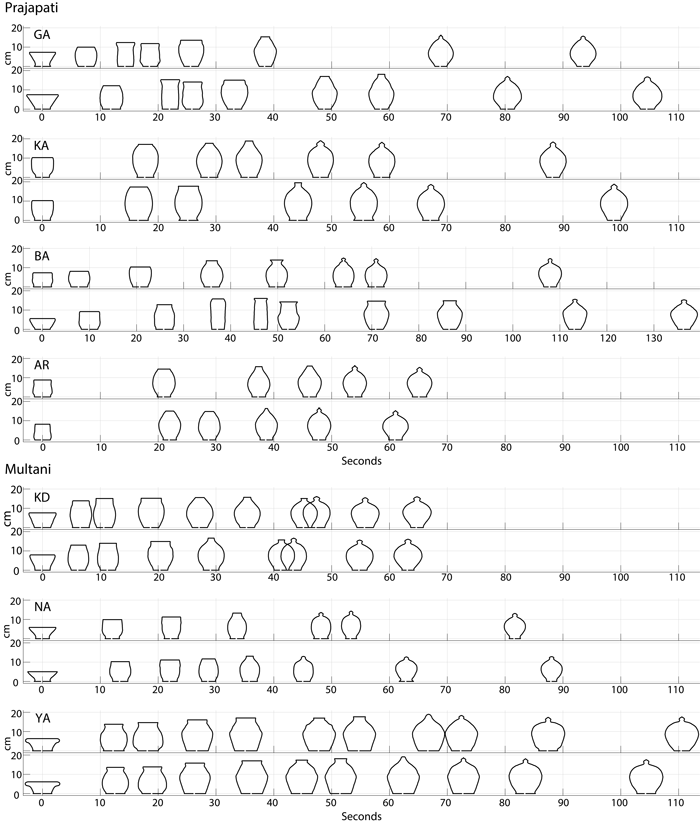
Figure 2: Shape formation process for 7 craftsmen making the same shaped vessel (Money-Bank).
Initials denote individual potters.
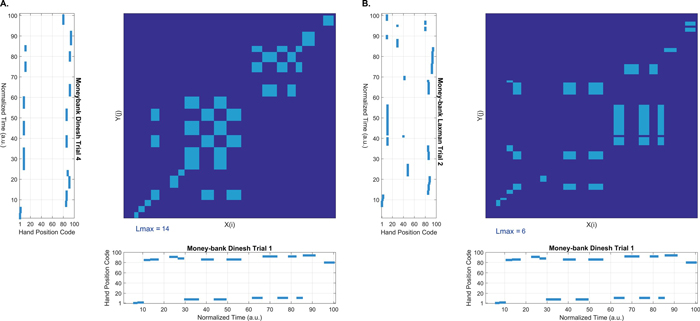
Figure 3: Cross recurrence plots of hand position sequences
A.Two trials by the same potter. B. Two trials by different potters
The light blue regions show when similar hand positions occurred in the two sequences.
The significance of this research
This research revealed that there is actually much variation in the formation process and the hand movements of the individual craftsmen, even when producing traditionally-shaped pottery in a manner that has been passed down for generations. From these results it can be surmised that each potter has been searching for their own distinct way of forming the shape of the vessel within the constraints of the tools used, such as the type of wheel, and differences in material.
Various theoretical models that have been proposed on the cultural transmission of handicrafts have viewed the inheritance of such skills as 'imitation' and 'transmitted information'. Conversely, this study provides quantitative evidence that traditional 'inherited' craftsmanship is more than mere imitation, shedding light on how individuals' ability is flexibly adopted from exploratory activities channelled by the social environment (e. g. of the pottery workshop) and the processes behind these factors. These aspects have been overlooked by existing theoretical models. The impact of these results will bring about the revision of existing theories that have reduced the transmission of traditional handicraft skills to 'imitation' and 'transmitted information'.
Furthermore, it is also hoped that this study's methodology and data could be used to determine whether unattributed archaeological artefacts were produced by an individual or several craftspeople.
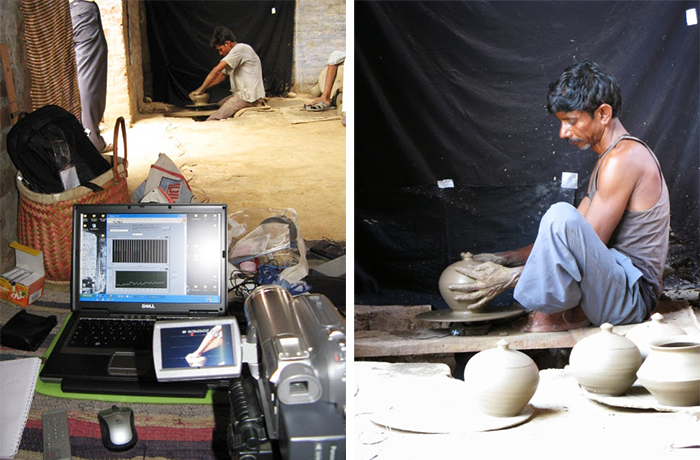
Left: Conducting the experiment. Right: A craftsman from the Indian Muslim community using a kick-wheel. ©Enora Gandon
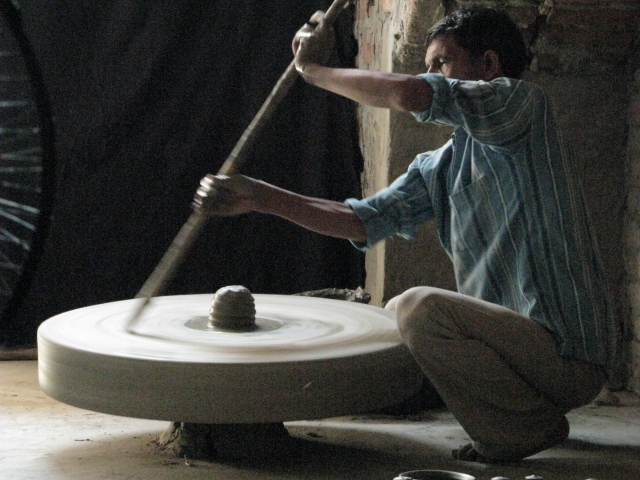
A craftsman from the Indian Hindu community using a stick-wheel. ©Enora Gandon
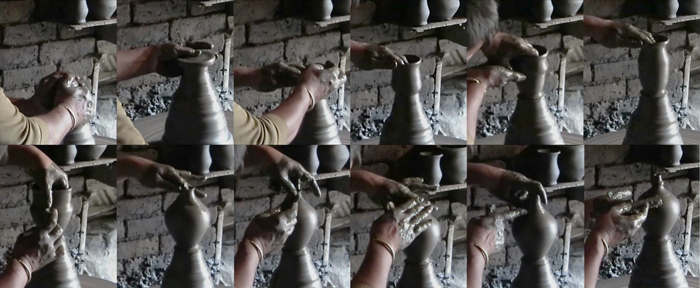
An example of a Nepalese craftsman's pattern of hand movements. ©Enora Gandon
Video showing a craftsman from the Indian Hindu community making pottery using a stick-wheel. ©Enora Gandon
Video showing a craftsman from the Indian Muslim community making pottery using a kick-wheel. ©Enora Gandon
Journal Information
- Title
- "Traditional craftspeople are not copycats: Potter idiosyncrasies in vessel morphogenesis"
- DOI:10.1371/journal.pone.0239362
- Authors
- Enora Gandon*, Tetsushi Nonaka*, John A. Endler, Thelma Coyle, Reinoud J. Bootsma
* Contributing author
- Journal
- PLoS ONE
- Title
- "Assessing the influence of culture on craft skills: A quantitative study with expert Nepalese potters"
- DOI:10.1371/journal.pone.0239139
- Authors
- Enora Gandon, Tetsushi Nonaka, Raphael Sonabend, John A. Endler
- Journal
- PLoS ONE






